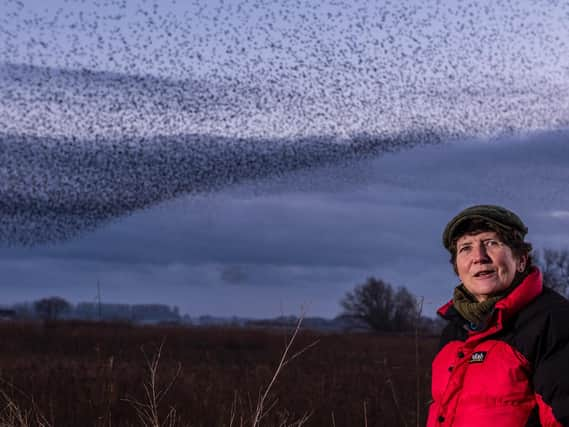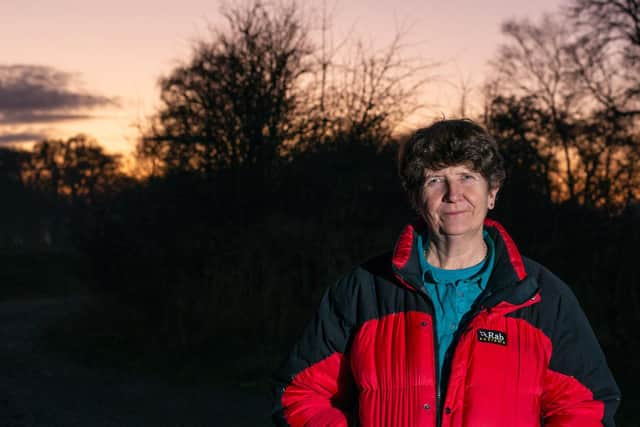Meet Jo Webb, an Extinction Rebellion protester working to tackle the nature crisis as chair of Yorkshire Wildlife Trust


“I want you to act as if the house was on fire,” environmental activist Greta Thunberg told global leaders during an address on climate change in January last year. “Because it is.”
Returning from an Extinction Rebellion-organised demonstration in London just a couple of months later, Jo Webb could not help but reflect on the teenager’s words.
Advertisement
Hide AdAdvertisement
Hide AdThe 59-year-old had travelled in a minibus from Leeds to the capital, armed with a tent, and had joined action by the environmental movement. She pitched up among other campers at Marble Arch, one of the London locations where protesters were blocking traffic, causing large-scale disruption, in the hope they would “force the Government to take urgent action on the climate and ecological emergency”.


“I think my contribution was only a small decibel increase in the volume of the fire alarm we are trying to ring,” Jo wrote on her return. “Fire alarms are of course meant to be annoying. But such annoyance and nuisance that we caused pales in comparison to what will happen, even on optimistic projections, if we fail to raise the alarm.”
Speaking via video call 20 months later from her home in Harrogate, Jo recalls how she was arrested for obstructing the highway during a sit-down on the road.
“It’s not something I wanted to do. But I do think the fact that so many people, and such a cross section, were willing to put their liberty at stake and go through the not pleasant process of being arrested and held in a cell in such numbers, is partly why people are now talking about [the crisis] more,“ she reflects. “It’s still nowhere near where it should be in terms of the action being taken but there’s more potential now I think than there was.”
Advertisement
Hide AdAdvertisement
Hide AdThe situation, she says, is so serious for the planet, and for wildlife and nature, that it “felt like there wasn’t anything else I could do”.
She credits action by Extinction Rebellion as being a “key tipping point” in raising awareness of climate change and influencing Government targets. “People like me and many others had been worrying about climate change for a long time and trying to speak into the silence about environmental breakdown had often felt so lonely and somehow very difficult to talk about.
“It wasn’t getting the kind of coverage it should, so it was a very powerful moment when by taking very direct action, completely non-violent, people were made to look at it more.
“I’m one of many people who believe that unfortunately the Government isn’t taking the kind of action it needs to in order to address the crisis. Increasingly, it’s making more and more bold targets but I think one of the key tipping points that started to influence that at least was Extinction Rebellion uprisings.”
Advertisement
Hide AdAdvertisement
Hide AdWhat still wasn’t being talked about quite so much, she says, was the crisis in nature; the loss of wild spaces and of animal and plant species in the natural world. It is this that will predominantly command her focus as the new chair of trustees of the Yorkshire Wildlife Trust, a voluntary role she took up earlier this month. “I will be doing what I can on the linked climate and biodiversity crises,” she says.
The trust, of which she has been a board member for about four years, works to protect wildlife and wild places and bring people closer to nature. Its focus is on creating a Yorkshire ‘rich in wildlife for everyone’.
“I think actually that’s not really the case at the moment,” Jo muses, “either the rich in wildlife bit, because it certainly isn’t anything like as rich in wildlife as it needs to be, or the for everyone bit – we’re not known about by as broad a part of the community as we’d like to be.”
Part of the trust’s work over the coming months will be to build up a greater picture of the condition of the region’s nature, the challenges it is facing and the best steps to take to protect and restore it.
Advertisement
Hide AdAdvertisement
Hide Ad“So much of Yorkshire’s precious wildlife and wild places have suffered, particularly over the last six or seven decades, due to a variety of factors,” Jo says. “Increased urbanisation, intensive agriculture practises, the climate emergency, loss of habitat, increased chemical use, pollution, ocean acidification – the threats to wildlife throughout the world are vast and complicated.”
However, it is not too late, she stresses, to change things for the better. The trust, the second oldest and largest of 47 wildlife trusts across the UK, aims to do just that. On Yorkshire’s coastline, its marine work includes whale and dolphin surveys, oyster and seagrass restoration and beach cleans to help tackle plastic pollution.
In land, there’s an emphasis on the restoration of peatlands, which not only support a myriad of wildlife but also act as a carbon trap, presenting opportunities for climate change mitigation, and help to prevent flash flooding by slowing the flow of water.
The trust’s other roles include working to manage more than 100 nature reserves in the region and campaigning to influence policy and planning applications in order to protect Yorkshire’s wildlife. With the organisation, Jo will also work with other landowners and farmers, as well as local authorities and developers, to share expertise and create landscapes “that work for both wildlife and people”.
Advertisement
Hide AdAdvertisement
Hide Ad“We have an ambitious goal to get 30 per cent of Yorkshire’s land managed for nature by 2030 and we hope that’s a goal that people and organisations across Yorkshire can unite behind,” she says.
Reaching out to engage people in experiencing the living world and observing wildlife will be key. “We want people to feel inspired by the wonders of nature – inspired to champion, protect and restore all of Yorkshire’s spectacular wildlife and wild places.
"What people can do will vary depending on their circumstances. It can include learning more about the natural world and how we depend on it and sharing their love of nature with friends and family.
“People working in organisations – businesses, voluntary organisations, councils, in education or health bodies for example, might be able to influence their team or organisation to make space for nature in any premises they run. We’d also love it if people would join the trust as members – we need more – or think about volunteering on their local reserves, or doing both.”
Advertisement
Hide AdAdvertisement
Hide AdJust as Jo credits Extinction Rebellion with bringing the climate crisis to the fore of public thinking, she believes one positive to emerge from the darkness of the Covid-19 pandemic has been people connecting with nature. “I think it has given people a chance to think about wildlife and the environment and how important that is to their quality of life and what they want for themselves and their children,” she says.
“Once people truly understand the wildlife we have in Yorkshire, so much of it right on our doorsteps, and how much we depend on it, then they are more likely to be inspired to join us in protecting and restoring it.”
Support The Yorkshire Post and become a subscriber today. Your subscription will help us to continue to bring quality news to the people of Yorkshire. In return, you'll see fewer ads on site, get free access to our app and receive exclusive members-only offers. Click here to subscribe.